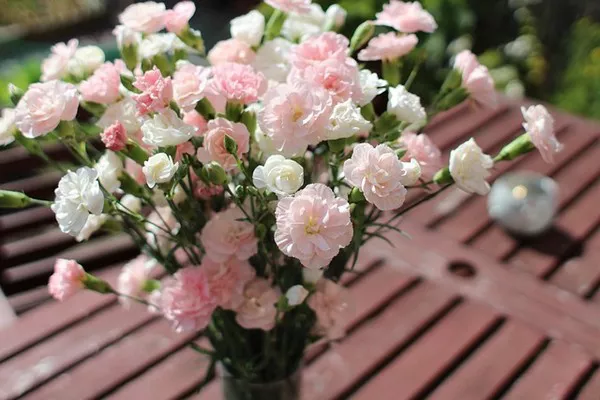Flowers have been cherished throughout history for their beauty and symbolism. Whether they are adorning your home, gracing a special occasion, or expressing sentiments of love and appreciation, fresh flowers bring joy and elegance to our lives. However, the ephemeral nature of cut flowers often leaves us longing for ways to extend their lifespan. Fortunately, science and tradition offer various methods to help prolong the life of your blooms. In this article, we will explore what to put in water to make flowers last longer, combining time-tested techniques with modern insights.
The Role of Water in Floral Longevity
Before delving into specific additives to enhance the longevity of cut flowers, it’s crucial to understand the fundamental role that water plays in preserving their freshness. Water sustains the flowers by providing essential nutrients and maintaining their turgidity, which prevents wilting. When flowers are cut from their source, they lose access to the nutrients they once received from the plant. Proper hydration is key to compensating for this loss and ensuring the flowers remain vibrant.
Clean Water: The Foundation
The foundation of any successful effort to prolong the life of cut flowers is clean water. It’s essential to use fresh, clean water free from impurities, as bacteria and fungi can quickly proliferate in dirty water, clogging the flower’s stem and impeding water uptake. To keep the water free from contaminants, use a clean vase and change the water every two days, trimming the stems by an inch at a 45-degree angle each time. This process helps maintain optimal hydration and reduces the risk of microbial growth.
Nutrient Solutions: Feeding Your Blooms
In addition to clean water, flowers benefit from nutrient-rich solutions that mimic the nourishment they would receive if still attached to the plant. Various commercial flower preservatives are available, and they typically contain three key components:
Sugar: Flowers require carbohydrates for energy, and sugar serves this purpose in cut flowers. It helps open the flower’s pores, allowing for better water uptake. A solution of 1-2 tablespoons of sugar per quart of water is generally sufficient.
Acidifier: An acidifier helps lower the pH of the water, making it slightly acidic. This prevents the growth of harmful bacteria and fungi. Lemon juice or vinegar, in small amounts (a few drops per quart of water), can serve as natural acidifiers.
Biocide: To further inhibit microbial growth, flower preservatives often include a biocide. Commercial products usually contain this component, but if not using such a product, a crushed aspirin tablet or a few drops of bleach (approximately ¼ teaspoon per quart of water) can be used sparingly.
While these commercial flower preservatives provide a convenient and balanced approach, you can achieve similar results by incorporating these elements individually. However, it’s essential to be cautious when using bleach, as using too much can harm the flowers.
Home Remedies for Flower Preservation
Aside from commercial flower preservatives, several household items can be added to vase water to prolong the life of cut flowers. These options are cost-effective and readily available:
Aspirin: Crush a single aspirin tablet and dissolve it in the vase water. Aspirin helps lower the water’s pH, acting as both an acidifier and a mild biocide.
Apple Cider Vinegar: A tablespoon of apple cider vinegar, known for its mild acidity, can help maintain the water’s pH and inhibit bacterial growth.
Soda: A small amount of clear soda (e.g., Sprite or 7-Up) can provide sugar and acidity to the water, aiding in flower preservation.
Copper Coins: Copper has natural antimicrobial properties. Placing a clean copper coin in the vase can help inhibit bacterial growth.
Vodka: A few drops of vodka can function as an antimicrobial agent while also providing carbohydrates for the flowers.
Experimentation with these household items can yield successful results, but it’s essential to monitor the flowers’ condition to ensure they are not negatively affected.
Advanced Techniques for Flower Preservation
For those seeking more advanced methods to extend the life of their flowers, consider the following techniques:
Temperature Control: Flowers last longer when kept in a cool environment. Avoid placing them in direct sunlight, near heating vents, or next to fruits that release ethylene gas, which can accelerate wilting.
Hydration Overnight: If flowers have become dehydrated, immerse them in water overnight. This allows them to rehydrate fully before arranging them in a vase.
Sealing Stem Ends: Applying wax or a water-resistant sealant to the cut ends of the stems can reduce water loss and prolong the life of the flowers.
Conditioning: Conditioning involves subjecting flowers to various treatments before arranging them. This can include removing leaves that would be submerged in water, recutting stems under water, and briefly immersing the entire flower in hot water to remove air bubbles that can block water uptake.
Conclusion
Enhancing the longevity of cut flowers is an art that combines science, tradition, and a dash of creativity. Proper care, starting with clean water, is fundamental. Commercial flower preservatives offer a balanced approach by providing sugar, acidity, and biocidal properties. Household items like aspirin, vinegar, soda, copper coins, and even vodka can be effective alternatives. Advanced techniques such as temperature control, hydration overnight, sealing stem ends, and conditioning can further extend the life of your beloved blooms.
Ultimately, what you put in water to make flowers last longer should be tailored to your specific needs and preferences. Whether you choose to rely on tried-and-true methods or explore innovative approaches, the key is to provide your flowers with the care and attention they deserve. By doing so, you can enjoy their natural beauty for an extended period, enhancing the ambiance of your home or the joy of a special occasion.


